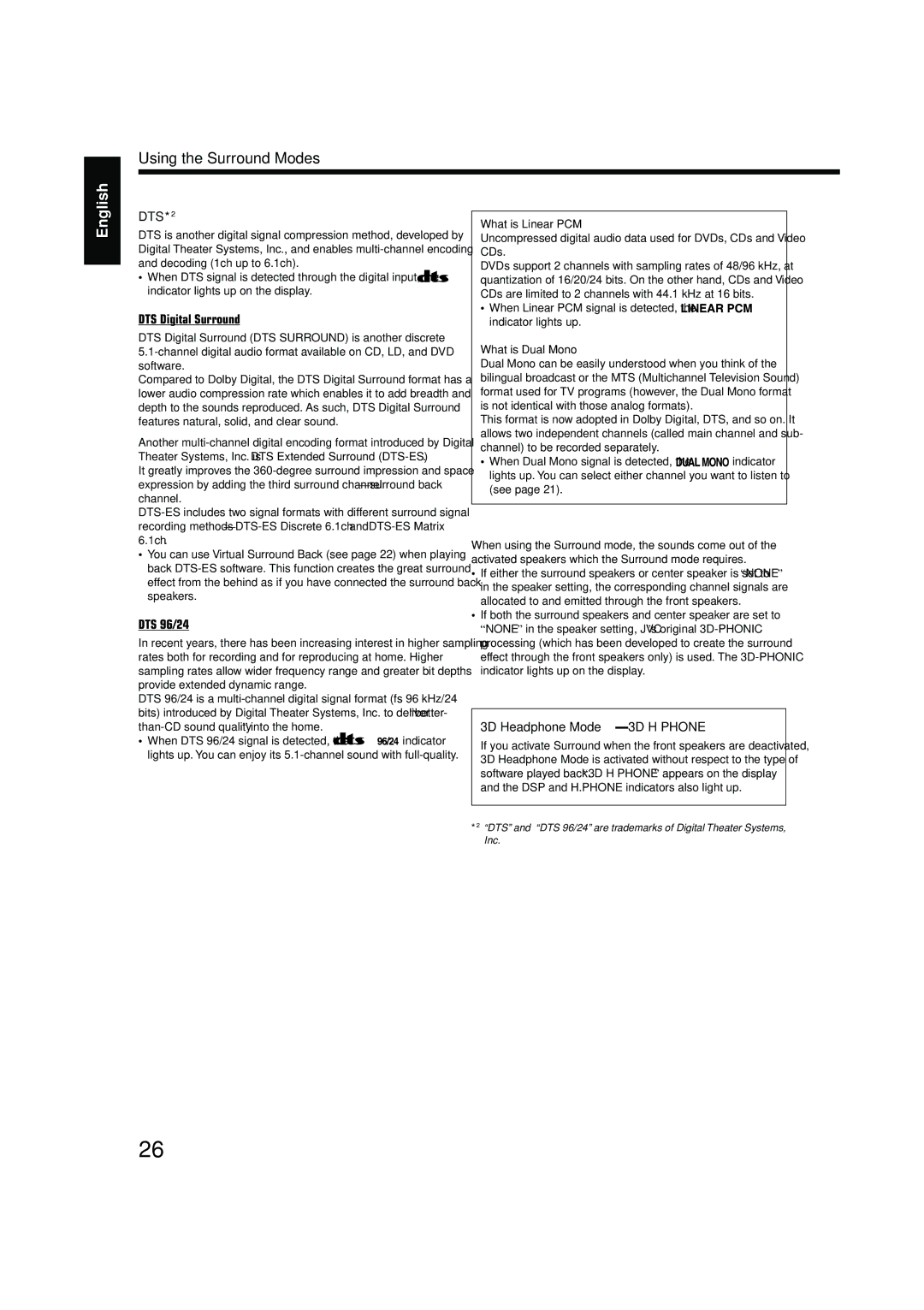
Using the Surround Modes
English
DTS*2
DTS is another digital signal compression method, developed by Digital Theater Systems, Inc., and enables
•When DTS signal is detected through the digital input, the ![]() indicator lights up on the display.
indicator lights up on the display.
DTS Digital Surround
DTS Digital Surround (DTS SURROUND) is another discrete
Compared to Dolby Digital, the DTS Digital Surround format has a lower audio compression rate which enables it to add breadth and depth to the sounds reproduced. As such, DTS Digital Surround features natural, solid, and clear sound.
Another
It greatly improves the
•You can use Virtual Surround Back (see page 22) when playing back
DTS 96/24
In recent years, there has been increasing interest in higher sampling rates both for recording and for reproducing at home. Higher sampling rates allow wider frequency range and greater bit depths provide extended dynamic range.
DTS 96/24 is a
• When DTS 96/24 signal is detected, the ![]()
![]()
![]()
![]() indicator lights up. You can enjoy its
indicator lights up. You can enjoy its
What is Linear PCM?
Uncompressed digital audio data used for DVDs, CDs and Video CDs.
DVDs support 2 channels with sampling rates of 48/96 kHz, at quantization of 16/20/24 bits. On the other hand, CDs and Video CDs are limited to 2 channels with 44.1 kHz at 16 bits.
•When Linear PCM signal is detected, the ![]()
![]()
![]()
![]()
![]()
![]()
![]() indicator lights up.
indicator lights up.
What is Dual Mono?
Dual Mono can be easily understood when you think of the bilingual broadcast or the MTS (Multichannel Television Sound) format used for TV programs (however, the Dual Mono format is not identical with those analog formats).
This format is now adopted in Dolby Digital, DTS, and so on. It allows two independent channels (called main channel and sub- channel) to be recorded separately.
•When Dual Mono signal is detected, the ![]()
![]()
![]()
![]() indicator lights up. You can select either channel you want to listen to (see page 21).
indicator lights up. You can select either channel you want to listen to (see page 21).
When using the Surround mode, the sounds come out of the activated speakers which the Surround mode requires.
•If either the surround speakers or center speaker is set to “NONE” in the speaker setting, the corresponding channel signals are allocated to and emitted through the front speakers.
•If both the surround speakers and center speaker are set to
“NONE” in the speaker setting, JVC’s original
3D Headphone Mode—3D H PHONE
If you activate Surround when the front speakers are deactivated, 3D Headphone Mode is activated without respect to the type of software played back. “3D H PHONE” appears on the display and the DSP and H.PHONE indicators also light up.
*2 “DTS” and “DTS 96/24” are trademarks of Digital Theater Systems,
Inc.
26
